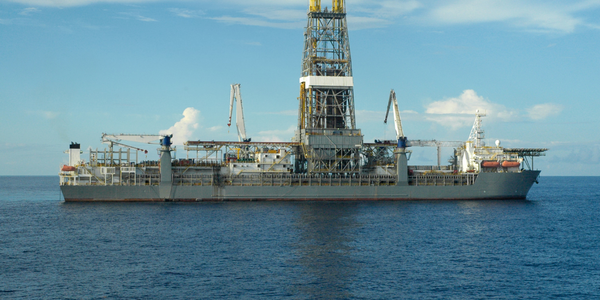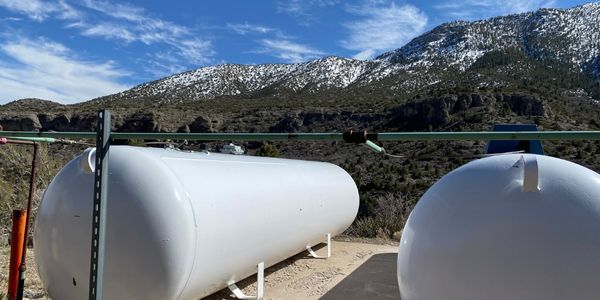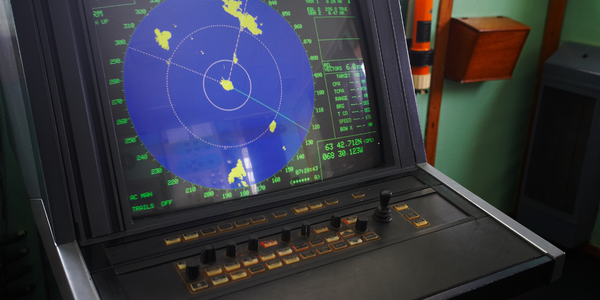The Pacific States Marine Fisheries Commission Selected InetSoft’s BI Tool to Analyze and Report on Massive Amounts of Data

Customer Company Size
Large Corporate
Region
- America
Country
- United States
Product
- InetSoft’s Style Report™ Enterprise Edition
Tech Stack
- Java
- Open Source Ingres enterprise database
Implementation Scale
- Enterprise-wide Deployment
Impact Metrics
- Productivity Improvements
- Environmental Impact Reduction
Technology Category
- Analytics & Modeling - Real Time Analytics
Applicable Industries
- Marine & Shipping
Use Cases
- Real-Time Location System (RTLS)
- Remote Asset Management
Services
- System Integration
About The Customer
The Pacific States Marine Fisheries Commission (PSFMC) is an organization formed by Congress more than 50 years ago with the primary goal to promote and support policies and actions to conserve, develop, and manage fishery resources in California, Oregon, Washington, Idaho and Alaska. They accomplish this through coordinating research activities, monitoring fishing activities, and facilitating a wide variety of projects, working to collect data and maintain databases on salmon, steelhead and other marine fish for fishery managers and the fishing industry. The PIT Tag Information System (PTAGIS) project is funded by the electrical rate payers in the Pacific Northwest, as part of the Northwest Power and Conservation Council’s Fish and Wildlife Program. In this system, a Passive Integrated Transponder (PIT) tag is injected into each fish with the latest in Radio Frequency Identification technology. A PIT-tagged fish is uniquely identified and then monitored throughout its entire lifecycle as it migrates to and from the Pacific Ocean back to its original spawning grounds.
The Challenge
The Pacific States Marine Fisheries Commission (PSFMC) was faced with the challenge of monitoring fish migrations through the Federal Columbia River Power System to provide valuable research information for the restoration of declining salmon and steelhead populations. The monitoring process involved recording large volumes of data which were automatically uploaded to the PTAGIS database every three hours. The challenge was how PSMFC reports were to be accessed, delivered and used across their disparate user base. Users access PTAGIS from remote locations and a wide variety of platforms including Windows PC, Apple Macintosh, Sun Solaris, Linux and others. The PSMFC needed a flexible, extensible, and easy-to-use solution.
The Solution
The Pacific States Marine Fisheries Commission selected InetSoft’s Style Report™ Enterprise Edition software for its flexibility, extensibility, and ease-of-use. The software's 100% Java and open-standards platform easily interfaced with the broad range of platforms used by the Commission and provided the user-friendly web-based interface needed for rapid report development. PTAGIS uses an Open Source Ingres enterprise database which supports Java connectivity; making integration with InetSoft’s Java-based BI software seamless. Because of Style Report’s zero-client, web-based interface, the solution did not require any additional software to be loaded on users’ computers. The ad-hoc User Interface is also particularly easy to use, and allows users to quickly and easily build and customize queries and send reports from any browser.
Operational Impact

Case Study missing?
Start adding your own!
Register with your work email and create a new case study profile for your business.
Related Case Studies.

Case Study
Drill ship power challenge: hybrid solution solves distribution issues
Aspin Kemp & Associates (AKA), a manufacturer of electrical power and control systems headquartered in Montague, PEI, encountered one with its hybrid power initiative, the first hybrid drill floor destined for installation on ultra-deepwater drill ships operated by Transocean, Swiss offshore drilling contractors. Since on-site modification was impossible and scrap recycling of any modifications was unacceptable, the enclosures had to arrive ready-to-install.

Case Study
Ensures Tanker Safety and Emissions Compliance
Storage tanks are irregular in shape and a certain amount of mathematical modelling is required to get an accurate representation of volume and, more importantly, the weight of material in each tank. In addition, countries have different emission regulations, so the ships position needed to be accurately known in order to geotag emission data.

Case Study
Real-time Networked Sonar System for Ships
A multinational, knowledge-based corporation that delivers marine electronics solutions is utilizing industrial Ethernet technology to help ensure that operations at sea are dependable and optimal. Based in Europe, the company has nearly 4000 employees working in 20 countries around the world, and produces high-tech systems for offshore oil and gas operations, merchant marine systems, and various applications for the defense and aerospace industries. The company produces products and systems used by merchant vessels and offshore installations for positioning, navigation, automation, as well as for surveying and monitoring the seabed, and for fishing vessels and fi sheries research. As one of the major suppliers of high quality marine electronics in the world, their products include chart plotters for yachts, triple redundant dynamic positioning systems for oil drilling rigs, and sonar and instrument systems for scientifi c research vessels. Products used for marine applications must be rugged enough to endure the corrosive effects of salt water, and be able to withstand excessive amounts of vibration and shock. For this reason, the company only uses DNV and GL certified products and components to ensure that their systems can meet the high standards required by the maritime industry.

Case Study
Fleet Management Connectivity Solution for Marzam
Marzam, in order to ensure the best service, invested 3 million dollars in the construction of 2 fuel oil tanks with 40k gallons and 10k gallons capacity each, located in Manta, Ecuador. The customer needs to keep fleet operations going with fuel available at all times in order to guarantee quality of service. KEY ELEMENTS FOR THE CUSTOMER: Real-time level monitoring: Tank infrastructure remote level monitoring. Configure alerts and notifications when reaching critical values to avoid the need for emergency refills and optimize supply schedules. Real-time consumption monitoring: The customer needed an easy way to monitor in real-time accurate values of consumption.

Case Study
Mitsubishi Electric's Edge Computing Solution Powered by Wind River VxWorks
Mitsubishi Electric Corporation, a global leader in factory automation (FA) applications, identified edge computing as a critical component of the Industrial Internet of Things (IIoT). The company aimed to enhance device and data security, reduce data traffic to the cloud, and enable faster response to network or device issues. In 2018, Mitsubishi Electric launched its first line of industrial hardware products designed for edge computing, the MELIPC Series. The primary development goals for MELIPC were to support the type of edge computing promoted by Mitsubishi Electric and to introduce advanced vision technology for device control. The flagship computer of the MELIPC line, the MI5000, was designed to combine real-time equipment control with high-speed data collection, processing, diagnosis, and feedback in a single machine. However, the development team needed a real-time control platform that could seamlessly integrate real-time control with proven analytic and diagnostic applications.

Case Study
Migrating to Software-Only Licenses for More Responsive License Management
The world’s premier shipping companies work with the software solutions of ABB Marine & Ports to get their vessels safely and efficiently to their destinations. A loyal customer of Wibu-Systems for over a decade, ABB has been relying on CodeMeter dongles to store the license keys for their ABB AbilityTM Marine Advisory System - OCTOPUS.The current version of the system is using Wibu-Systems’ robust metal-case CmStick ME, a perfect choice for the rugged conditions at sea. As satellite communications has made fast Internet connections at sea a common reality for maritime operators, the company is looking to move from physical to software solutions to streamline its logistics processes.


